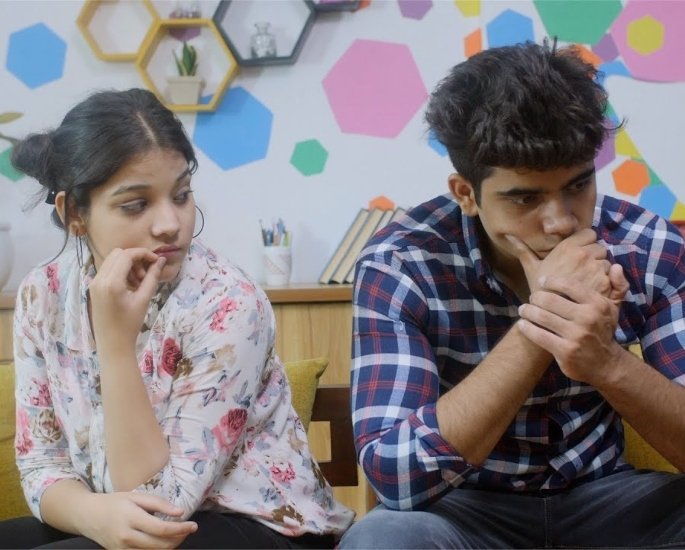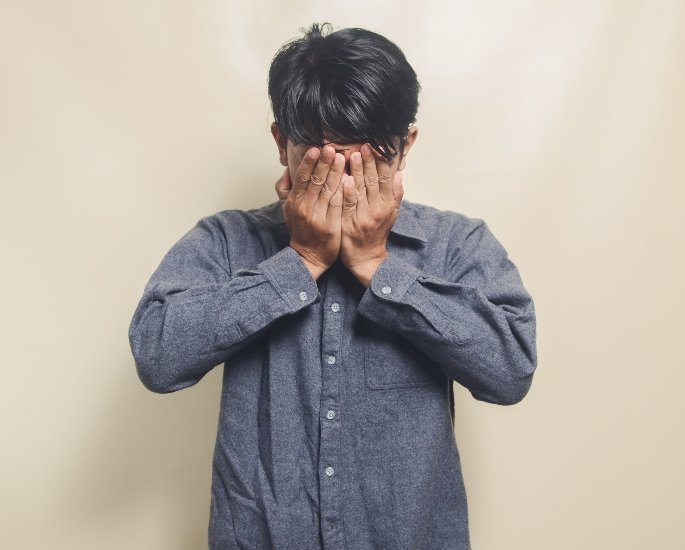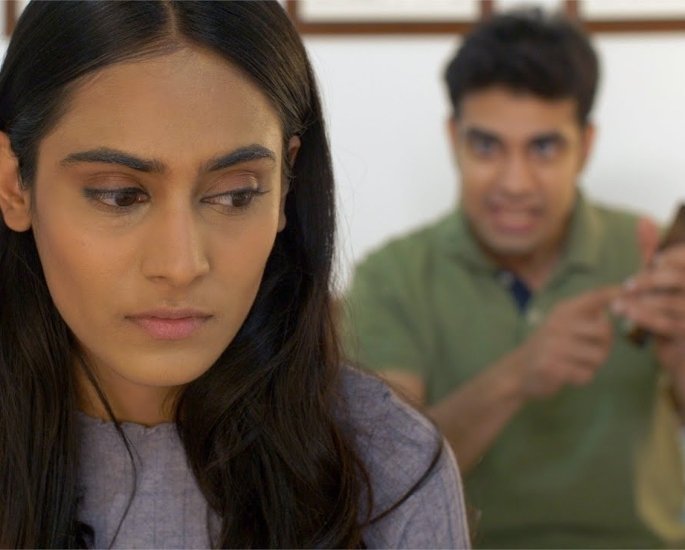How to Spot Domestic Abuse in a Desi Relationship
There is a level of acceptance that different issues happen within a Desi household, but is it possible to spot domestic abuse?
Many people within abusive relationships cannot escape. Even if they try to talk or seek help, it’s extremely hard for them to fully get the support they need.
That’s why it’s vital for those on the outside – whether it’s family or friends – to spot the signs of domestic abuse.
This is especially important within a South Asian household.
Topics like abuse are rarely spoken about when it comes to both men and women, so it’s even harder for those experiencing it to come forward.
Not only does this increase the risk of a longer period of abuse, but it can also, in some cases, lead to irreversible consequences.
Therefore, it’s critical for the community to be aware of aspects to notice which could potentially save someone from a life of pain.
Separation in the House


As with most Desi families, having visitors come to the house is pretty normal. Whether it’s cousins or friends, a South Asian house always has something going on.
However, if someone is getting abused, there are some signs to pick up on.
For example, if the husband and wife are separate when guests come over and focus on themselves.
Tension is easy to spot and if they barely speak or interact with one another, then this could be a warning sign.
Likewise, they could have just had an argument as any normal couple. But, if they act different around one another, then something could be off.
In another instance, one of the individuals may be very demanding. The husband could force his wife to cook, clean, make certain dishes or show a level of disrespect in front of people.
Another sign is if the husband or wife is rude to or about their partner. They could make snide remarks about one another, joke about them or discuss their flaws openly.
It’s important to see the dynamic of this and the extent to which a couple is separated, both emotionally and physically. This can be a sign of a hostile environment.
Overprotective Partner


Another way to spot domestic abuse is to be wary of an extremely overprotective partner.
Whilst it’s good to feel protective over your loved one, it should be done so without bearing down on them and limiting the life they have.
Some traits of an overprotective partner is if they eavesdrop, being aggressive and deciding what their partner wears.
For instance, if you are out with a friend and their girlfriend/wife messages/calls to say “come home” and they leave straight away, there may be something toxic there.
That’s not to say someone can be overprotective and not abusive.
But in most cases, overprotective people see their partners as ‘property’ and feel they need to be in control all of the time.
Even in a Desi house, someone can show the same traits and make it obvious that there are certain limits to adhere to.
This is an unhealthy environment and can also link to outdated gender roles where men force their wives to stay at home.
Controlling Behaviour


As mentioned before, control is the essence of an abusive partner. It’s one of the fundamental characteristics to recognise domestic abuse in a relationship.
Controlling behaviour is quite easy to spot and involves a lot of manipulation.
Early signs of control are obvious. It can be through someone being aggressive, constant calls/texts, asking who they’re with etc.
However, when someone is controlled so much, they start acting different and that’s when it can be harder to see.
One could start acting differently. They could ask their partner for permission to do things or blame themselves for a troubled relationship.
Some other traits of a controlling character are:
- Not giving their partner access to money/credit cards.
- Not allowing their partner to travel alone or have access to a vehicle.
- Always accusing their partner of cheating.
In a Desi relationship, individuals can certainly suppress this type of behaviour so others don’t catch on.
Or on the other hand, someone could carry on this type of behaviour with the impression that no one will talk about it because of cultural standards.
Behavioural Changes


In order to spot domestic abuse, paying attention to someone’s demeanour is vital.
If someone who was once joyful and outgoing suddenly becomes withdrawn, it can be an important sign of domestic abuse.
Someone can become fearful of their partner. For example, if they’re out of the house, they may constantly be checking their phone or scared to get back home late.
Manjit Rana, a 38-year-old divorcee from Birmingham explained:
“I used to love to party. But once my wife started abusing me, I got messed up mentally.”
“I started to drop out of things with my mates and would constantly message her about what I was doing.
“My mates became angry with me because I’d commit to something and then back out. But, they didn’t know the whole situation.”
Manjit raises an interesting point about how behaviour can change through both physical and psychological factors.
However, talking about your mental health openly within the South Asian culture can be difficult.
So, it’s important for others to pick up on certain cues when someone’s behaviour changes so they can offer an avenue of support.
Physical and Emotional Signs


Within a Desi relationship, physical abuse is never discussed. Even when it is, there is not much done to the perpetrator and not enough help given to the victim.
But, seeing physical harm on someone’s body is an obvious sign of toxicity within the relationship.
Bruises are the most common but others can include busted lips, red or purple marks, sprained wrists and pulled-out hair.
Likewise, you may see a loved one dress differently in order to cover up scars or physical signs with clothing.
Some examples include wearing long sleeves and scarves in the summer, donning sunglasses inside and applying a heavy layer of make-up.
Of course, these are to be noted accordingly as people may do this as part of their normal style.
Even in Desi relationships, individuals can try and mask certain parts of their appearance with different clothing.
Rani Ahmed, a 49-year-old woman from London expressed:
“I was abused in my first marriage where he hit and pushed me a lot. I used to get a lot of bruises on my arms so when we went to weddings, I’d wear long sleeve suits.
“Or for close weddings, I’d wear a saree with a cardigan. I had no other way around it and people would look at me like a weirdo.
“I’d try using make-up, but it would rub off easily and I’d have to top it up or people would notice.”
Along with the physical torture, there are also emotional signs that can lead you to spot domestic abuse.
In a DESIblitz survey, we asked readers “which kind of domestic abuse have you experienced most?”.
Emotional abuse topped the results with 71% whilst physical was second (20%) and sexual last with 9%.
Emotional abuse can tie into someone’s behaviour. A key tip is to listen to any changes in someone’s vocabulary.
Do they talk with fragility or in a negative tone about themselves? Do they go quiet when speaking about their partner?
You’ll also be able to see if that person is feeling helpless and hopeless. Whilst the victim may never say it openly, their emotions will be able to tell otherwise.
Other emotional signs of abuse include:
- Agitation or anxiety.
- Developing a drug or alcohol problem.
- Low self-esteem.
- Symptoms of depression.
Victims may also have a constant state of alertness where they never can completely relax.
Denial


Last but not least is when a victim is in denial. Whilst this happens in most domestic abuse situations, it is much more prominent in some Desi relationships.
With the lack of awareness and knowledge on the matter, many victims defend their abusers.
This may stem from an idea that no one will believe them so why should they talk or they have been manipulated to an extreme level.
Also, to admit that there is an issue going on is a risk as it may cause further violence or a sense of embarrassment/shame in the community.
In areas of South Asian culture, both women and men are forced to deny any wrongdoing within the relationship or household.
Victims are constantly terrified of what to do and prolonged abuse can lead to psychological effects and even suicide. Such was the case of Mandeep Kaur in New York.
The Indian native moved to America with her husband and committed suicide after getting violently punished for only giving birth to daughters.
In her final moments as she wept on video, she said:
“I tried my best, but I cannot take the daily beatings now.
“For eight years, I have been tolerating his bad behaviour, hoping that he will mend his ways one day.”
Mandeep also stated on camera that her in-laws had a part to play in her suicide after offering no protection and denying the abuse was taking place.
Therefore, if someone is extremely in denial or defensive about abuse happening, then it most likely is and they cannot speak out.
But, it’s important for those friends and family to avidly offer their support or question sketchy behaviour.
Recognising domestic abuse can come easily or be harder to spot in certain situations. But knowing certain cues or personality traits may help someone in need of dire help.
Likewise, some of these traits can also serve as red flags when entering a new relationship.
If a fresh potential suitor shows some of these abusive characteristics, then it could be a warning sign.
If you are a victim or survivor of domestic abuse, you can contact the following national organisations to seek help: